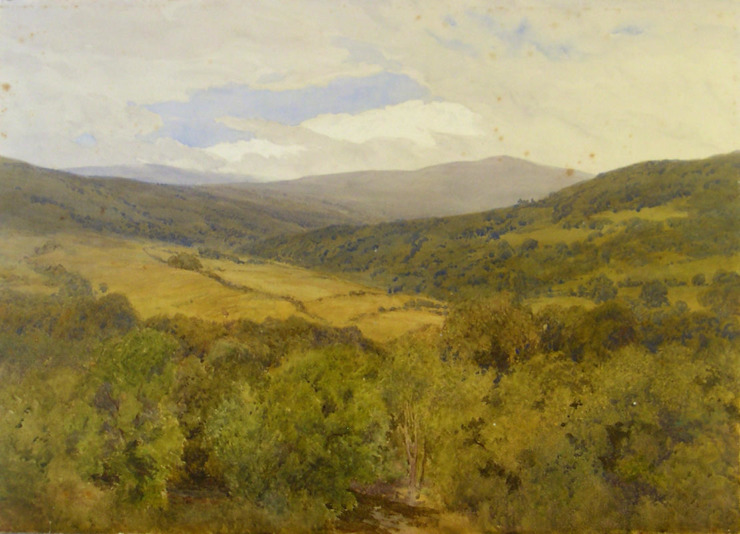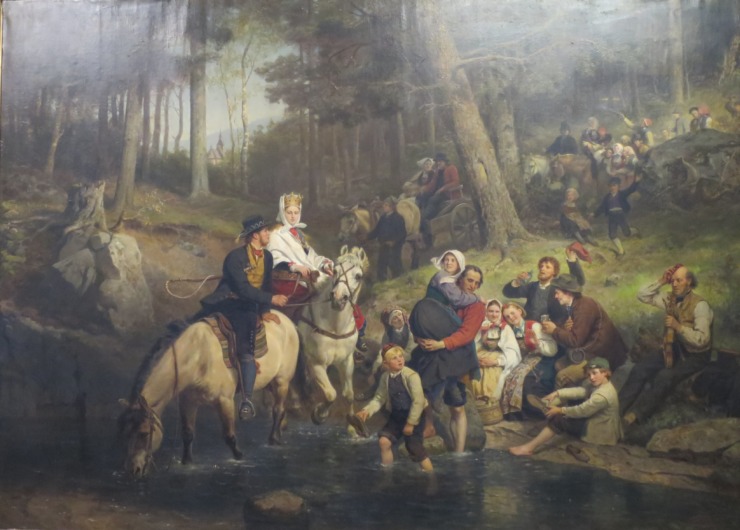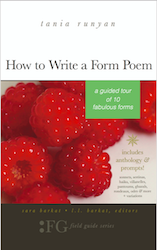A Galloway Song
Ah! ken ye what I met the day
Out oure the Mountains
A coming down by craggies grey
An mossie fountains —
A[h] goud hair’d Marie yeve I pray
Ane minute’s guessing —
For that I met upon the way
Is past expressing.
As I stood where a rocky brig
A torrent crosses
I spied upon a misty rig
A troup o’ Horses —
And as they trotted down the glen
I sped to meet them
To see if I might know the Men
To stop and greet them.
First Willie on his sleek mare came
At canting gallop —
His long hair rustled like a flame
On board a shallop.
Then came his brother Rab and then
Young Peggy’s Mither
And Peggy too — adown the glen
They went togither —
I saw her wrappit in her hood
Fra wind and raining —
Her cheek was flush wi’ timid blood
‘Twixt growth and waning —
She turn’d her dazed head full oft
For there her Brithers
Came riding with her Bridegroom soft
And mony ithers.
Young Tam came up an’ eyed me quick
With reddened cheek —
Braw Tam was daffed like a chick —
He coud na speak —
Ah Marie they are all gane hame
Through blustering weather
An’ every heart is full on flame
Ah! Marie they are all gone hame
Fra happy wedding,
Whilst I — Ah is it not a shame?
Sad tears am shedding.
-John Keats
Enjoy Artistic Representations of “A Galloway Song” by John Keats

Landscape- Galloway by W Eyre Walker

Wedding Procession through the Forest by Adolph Tidemand, 1873
Listen to this Reading of “A Galloway Song”
Listen to Musical Interpretations of “A Galloway Song” by John Keats
John Keats Biography
Keats was born in London on Oct. 31, 1795; a few weeks later he was baptized at St. Botolph Without Bishopsgate Church, near where his parents lived and father worked as the manager of a stable owned by his father-in-law. Keats was the eldest of four children, with George, Tom, and Fanny following him. The family was well off enough that the boys were sent to Clark’s Academy in Edmonton at what is now the north London borough of Enfield for their education; it was riding his horse home from a visit to the school that Keats’ father fell and died the next day. His mother remarried (rather quickly, in fact), fought with the rest of the family, and died fairly young from consumption or tuberculosis, which was all too common at the time and would eventually claim the life of Keats’ youngest brother, Tom, as well as Keats himself.
He was apprenticed to a local doctor, but the relationship didn’t seem to work too well. He ended up working at St. Guy’s Hospital in the Southwark district of London, continuing his medical training and writing poetry (the site of the original St. Guy’s in now occupied by London’s tallest office building, known locally as “The Shard”).
While Keats had numerous city connections (Anita Miller also has a “Keats in the City” walk), it is with Hampstead that he is most closely associated. Fellow poets lived there, as did the editor who first published his poetry. Artists whom Keats associated with lived there. Keats himself would move there with his brothers. Keats and his friends would wander Hampstead Heath, talking and arguing poetry and the issues of the day. After moving into Wentworth House in Hampstead, Keats wrote five of six famous odes, including “Ode to a Nightingale.” And it would be at Wentworth House in Hampstead that Keats would realize that he was dying from the same disease that took his mother and younger brother.
Enjoyed A Galloway Song by John Keats and want to know more about Keats’ life? Try A Month With Keats: A Walk Into His Life
That’s it for A Galloway Song!
BUY ‘HOW TO WRITE A FORM POEM’ NOW!
